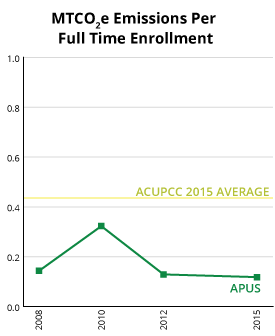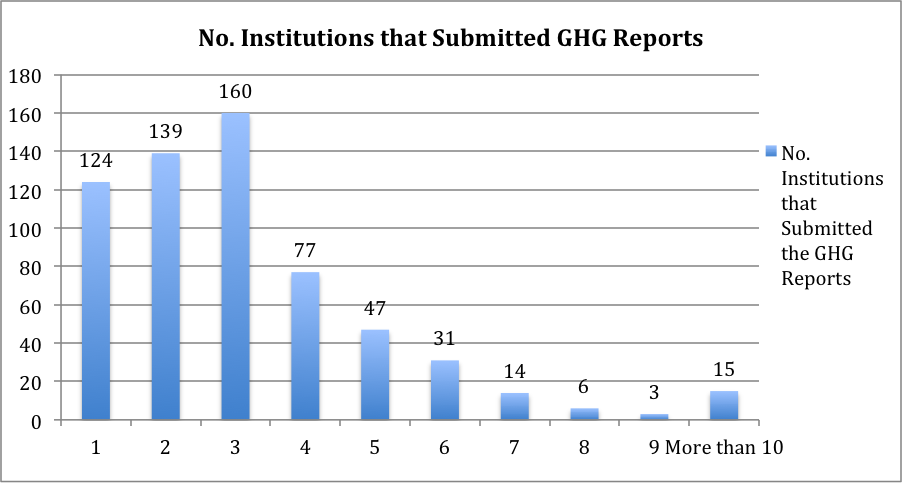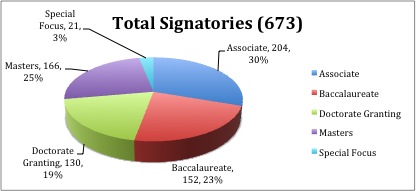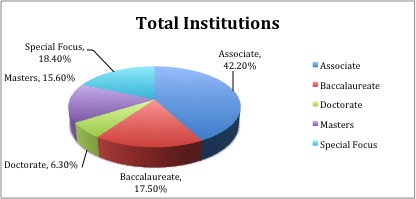Data Chronicles: Lowest emissions per Fulltime Equivalent and by Square Footage
 by Amanda Carpenter, Program Associate, Second Nature
by Amanda Carpenter, Program Associate, Second Nature
Within the American College & University Presidents’ Climate Commitment network, we like to highlight institutions that are making outstanding progress towards their carbon neutrality goals. Two of the metrics that we use to normalize the data are emissions per Full Time Equivalent, and emissions per 1000 square feet. These data points are taken from the self-reported values in the Greenhouse Gas and Progress Reports that are submitted by signatory institutions.
Emissions per Full Time Equivalent

The school that had the lowest gross emissions per Full Time Equivalent was the American Public University System at about 0.1 metric tons of CO2e, rounded up in our system to the nearest tenth. For their 2015 Greenhouse Gas Inventory, the American Public University System reported a Full Time Equivalent of 42136.0 students.
In the narrative section of the 2014 Progress Report, the American Public University System points to its high density and online learning
programs as being a contributor for their success.
- Read more about Data Chronicles: Lowest emissions per Fulltime Equivalent and by Square Footage

 by
by 

